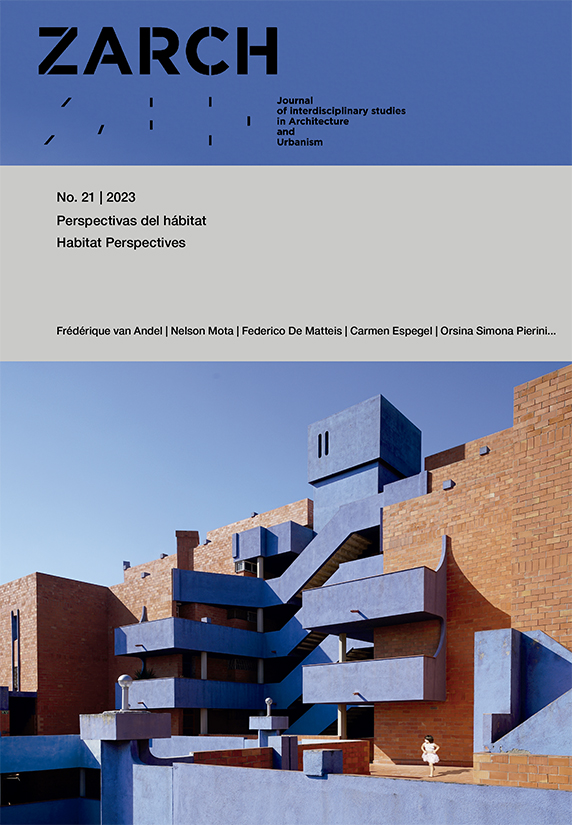Unfolding the Concept of Flexibility in Collaborative Housing Design
DOI:
https://doi.org/10.26754/ojs_zarch/zarch.2023218935Keywords:
Flexibility, Housing Revolution, Collaborative Housing, CohousingAbstract
The article discusses the concept of flexibility in architecture and its application in collaborative housing projects. It explores three key connotations of flexibility - redundancy, technical means, and political strategy - as put forth by Adrian Forty. The design strategies for flexibility in collaborative housing include filter elements to create an intimacy gradient, redundant circulation spaces, programmatic genericness of spaces, and a wide variety of typologies and technical devices. The article also discusses the role of collective decision-making in collaborative housing design and the construction of a shared meaning system to guide future choices.
Downloads
References
Alexander, Christopher; Ishikawa, Sara; Silverstein, Murray. A Pattern Language: Towns, Buildings, Construction. New York: Oxford University Press, 1977.
Brand, Stewart. How Buildings Learn: What Happens after They’re Built. New York; Toronto; London: Penguin Books, 1995.
Eco, Umberto. Opera aperta. 4th ed. Milano: Bompiani, 1997.
Forty, Adrian. Words and Buildings: A Vocabulary of Modern Architecture. London: Thames & Hudson, 2019.
Fromm, Dorit. Collaborative Communities: Cohousing, Central Living, and Other New Forms of Housing with Shared Facilities. New York: Van Nostrand Reinhold, 1991.
Giddens, Anthony. Social Theory and Modern Sociology. Stanford, Calif: Stanford University Press, 1987.
Groák, Steven. The Idea of Building: Thought and Action in the Design and Production of Buildings. 1st ed. London: E. & F. N. Spon, 1992.
Habraken, N. John. Supports: An Alternative to Mass Housing. London: Architectural Press, 1972 [1st ed. 1961].
Hertzberger, Herman. Lessons for Students in Architecture. Translated by Ina Rike. 7th ed. Rotterdam: Nai010 Publishers, 2016 [1st ed. 1991].
Lang, Richard; Carriou, Claire; Czischke, Darinka. Collaborative Housing Research (1990–2017): A Systematic Review and Thematic Analysis of the Field. Housing, Theory and Society 37, no. 1 (January 2020): 10-39. https://doi.org/10.1080/14036096.2018.1536077.
Lefebvre, Henri. The Production of Space. Translated by Donald Nicholson-Smith. New Jersey: Wiley-Blackwell, 1991 [1st ed. 1974].
Leupen, Bernard. Frame and Generic Space. Rotterdam: 010 Publishers, 2006.
Marrodán Ciordia, Esperanza. De proyecto a proceso. Trayectorias posibles para un proyecto urbano basado en la escucha. ZARCH 20 (junio 2023): 72-85. https://doi.org/10.26754/ojs_zarch/zarch.2023206904.
Moudon, Anne Vernez. Built for Change: Neighborhood Architecture in San Francisco. Cambridge, Mass.: MIT Press, 1989.
Rolando, Ludovica. How Will We Live Together? A Comparative Analysis of Housing Cooperatives in Zurich and Barcelona. TECHNE - Journal of Technology for Architecture and Environment 24 (July 2022): 157–65. https://doi.org/10.36253/techne-12871.
Schneider, Tatjana; Till, Jeremy. Flexible Housing. 1st ed. Amsterdam; Boston: Architectural Press, Elsevier, 2007.


